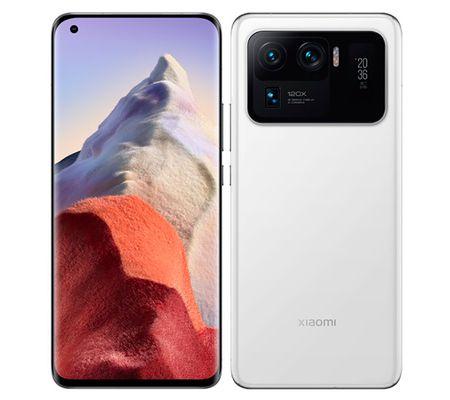Main module: 50 megapixels, f/1.9, eq. 24 mm
With its main module, the Xiaomi Mi 11 Ultra therefore captures snapshots in 12 megapixels by default. It is possible to force full definition by going through the photo application options and choosing the cleverly named "50" mode, for 50 megapixels. To compare the two definitions, we isolated an area of 0.92 megapixels on each shot.
During the day, this increase in definition allows for much more comfortable reframing. The mobile also takes the opportunity to offer more details. The result is very good in full definition.
At night, Xiaomi lightens the image processing in full definition. We thus find a little more detail, despite an overall smooth rendering. We also note a slightly more pronounced contrast.
Now let's compare the mobile with its most direct opponent, the Samsung Galaxy S21 Ultra.
During the day, the Mi 11 Ultra displays very good quality. Despite somewhat reddish tones, the photo is very detailed, offering very clean colors. The S21 Ultra forces a little on the contrast, but still delivers a shot that is a little more pleasing to the eye.
At night, Xiaomi falls back into its old ways. The mobile tends to smooth more than reason and to lose color. Even if the rendering is more successful than that of the Galaxy S21 Ultra, it lacks detail to position itself well against the best, whether it is the Galaxy S20 Ultra or Huawei's Mate 30 Pro.
Ultra-wide-angle module: 48 megapixels, f/2.2, eq. 12mm

The change in resolution on the ultra wide-angle leads to the same conclusions as those of the main module: more detail, but only in good light conditions.
The result is also very good in the center of the daytime full definition photo, with excellent sharpness.
In low light, at full definition, the smartphone delivers a very rough shot, smoothed, blurry and with a lot of digital noise.
In the center of the shot, the Mi 11 Ultra manages to offer a more detailed shot than that of the S21 Ultra. The software processing is very light and the sharpness more important. We note all the same a colorimetry which draws towards the red and a distortion in barrel of the photo.
In the difficult exercise of ultra wide-angle shots at night, the Mi 11 Ultra does well. Although displaying a warm tone, it generally offers more detail than the competition, with less pronounced smoothing.
5x telephoto module: 48 megapixels, f/4.1, eq. 120 mm
While full definition was relevant for the two previous modules, this is not the case here.
During the day, the full definition suffers from excessive software processing which smoothes the picture and drowns out the details.
At night, the shot is simply unusable at full definition. Might as well prefer the default mode to shoot in 5x.
Here, the S21 Ultra only offers a 3x optical zoom, where the Xiaomi opts for 5x. Despite a greater distance from the scene, the image of the Mi 11 Ultra offers a much more detailed rendering than that of its Korean opponent. Also note that the center of the Mi 11 Ultra photo is covered in digital noise.
In low light, the difference is quite obvious between the two smartphones. The snapshot of the Mi 11 Ultra turns out to be much less smooth than that of the S21 Ultra. We are therefore dealing with a photo with better sharpness, and therefore more flattering.
Front module, portrait and video mode
At the front, the Mi 11 Ultra offers a 20-megapixel module, the same as that of the Xiaomi Mi 11. Selfie quality is good in all light conditions. But the subtlety of this Ultra model lies in its screen placed at the rear, which allows you to take your best self-portraits with the main 50-megapixel module.
For portraits, the smartphone also excels. He manages to appropriately outline a subject without bumping into the usual small details such as small hair and beard hair.
In video, the Mi 11 Ultra is capable of filming up to 8K at 24 fps. It is possible to film in 4K at 30 or 60 fps without HDR. With HDR enabled, 4K is only available at 30 fps. The optics being stabilized, the images captured do not move, but to take advantage of it, it will be necessary to make a concession in terms of the recording definition which is limited to 1080p at 30 fps.
